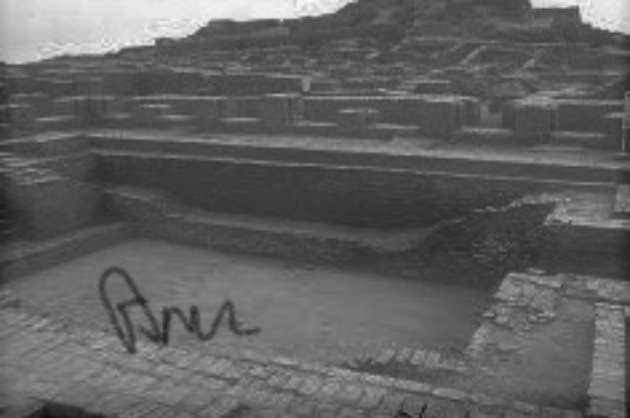Anupama Nair
The year 2014 was a very memorable year for me personally as I had the chance to visit Gujarat for the very first time. I visited Dwarka, Somnath and then visited many Indus Valley sites in Gujarat. I surely enjoyed visiting those sites and hope one day I get to see Harappa and Mohenjadaro. The major ancient civilizations of the world were Indus Valley Civilization (3300 BC–1900 BC), Greek (2700 BC–479 BC), Roman (550 BC–465 AD), Egyptian (3150 BC 332 BC), Mesopotamian (3500 BC–500 BC), Mayan (2600 BC–900 AD) among a few.
Rangpur in Limdi Taluka of Ahmedabad district was the first site to be re-excavated after our Independence as the historians suspected to have a Harappan connection. It is believed that the Harappans probably migrated to Kutch around 2500 BC, and decided to settle down there. It is believed that there are 60 Indus settlements have been found in Kutch, of which 40 belong to the ‘early’ phase while the others belong to the mature phase. The discoveries done by historians reveal that the Harappans brought their culture and way of life to Gujarat much before the civilization declined, causing la arge-scale migration from Kutch to the hinterland of Gujarat and even modern-day Saurashtra.
If you are a historophile or a lover of history and ancient civilizations, a trip to all the Indus Valley sites in a particular state would be perfect for your next holiday.I started with Gujarat as it is near to Mumbai and took Shatabdi to Ahmedabad and thus started a journey of a lifetime!
My first stop was in Lothal, that was 78kms from Ahmedabad. The word Lothal, in Gujrati means ‘Mound of the dead’ has been formed by combining the words Loth and sthal. Lothal which showcases the Harappan culture in all its forms, was discovered in 1954. The most accessible Harappan-era site in Western India, was located along the Bhogava River, a tribute of the Sabarmati, and was essentially a port city. It is believed to be 3,700 years old, and the site includes seven hectares and is much smaller than Mohenjodaro. Lothal’s thick peripheral walls were designed to withstand repeated tidal floods, during the heavy monsoon downpour. The Harappans liked Lothal for its sheltered harbor and a fertile hinterland. I saw the citadel, or the upper town, which is located in the south-eastern corner and can be demarcated by platforms of mud-brick that rise four meters in height. The citadel has wide streets, drains, and rows of bathing platforms, which suggests a high level of planning. I saw a large structure, identified as a warehouse, and a square platform, and the lower town, which also enjoyed civic amenities, and subdivided into two sectors.
Next stop was Surkotada, which was 280 kms away from Lothal. This site was discovered in 1964. The locals believed that a river flowed past the north-eastern side many thousand years ago and emptied into the Little Rann. The Harappans came to Surkotada around 2300 BCE, and built a fortified citadel and residential annex, made of mud brick, mud lumps and rubble, and that comprises houses with bath-rooms and drains. The site was occupied for 400 years and despite its small size, archaeologists considered Surkotada as very important site and place it equal to Kalibangan and Lothal, when it comes to city planning. Many scholars feel that the location was strategic to control the eastward migration of the Harappans from Sind, which lead to the idea that Surkotada could have functioned as a regional capital or as a garrison town. Interesting finds include painted pottery with the typical script of the Indus Valley painted on them, copper objects, and a Harappan seal. A stash of copper beads and bangles, and terracotta toys, tanks, and beads have also been discovered. I could see horse remains dating back to 2000 BC, which was something I will never forget.
I then halted at Bhuj for the night and then continued towards Dholavira, which was 214 kms away. Dholavira is said to be one of the five largest Indus Valley sites. Like other Indus Valley Civilization sites, Dholavira displayed great skill of urban planning. Gujratis call it Kotada, and the settlement had been divided by archaeologists into three sections — the citadel, middle town, and lower town. I saw an enormous fortification on all four sides of this settlement, and a series of reservoirs. I saw numerous gateways, built-up areas, street systems, wells, and large open spaces within the fortification. Ten symbols can be seen on the northern gate of Dholavira, and have been dubbed the Dholavira Signboard. Historians believe that this could be the oldest signboard in the entire world. The presence of a range of graveyard like structures found here also sheds light on the socio-religious beliefs of the people in those days.
I will write about more sites when I visit other states.

































